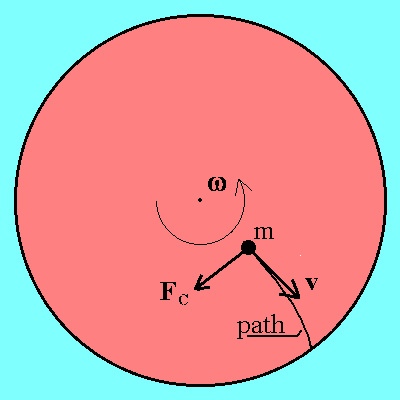

The Coriolis effect can be demonstrated by the following experiment.
Imagine a disk which first does not rotate. A mass m which moves with
constant velocity v from the center of the disk towards the rim moves on
a straight line. No force affects the movement of the mass.
Now let the disk rotate with a constant angular velocity w
(see
figure above). Still no external force affects the mass. An observer located on
the rotating disk - and who has no indication of this rotation - sees the
mass moving along a bended path. This observer would state that the mass
must have been affected by a "force", which acts perpendicular to the direction
of movement. This fictitious "force" is called the Coriolis force Fc ![]() .
.